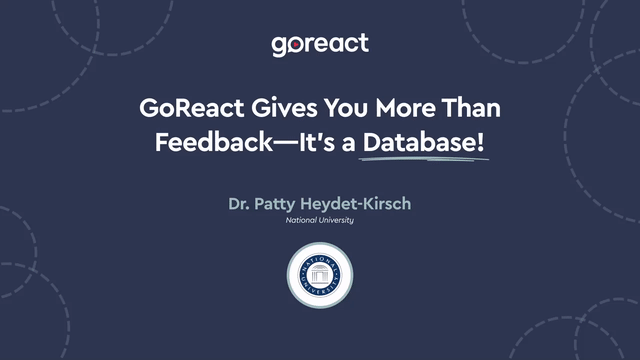Hillary Gamblin:
Share with us how you began gathering data?
Dr. Patty Heydet-Kirsch:
I did… Again, being new to California, it was interesting for me because I had to learn the state standards and, again, what they were looking for.
Dr. Patty Heydet-Kirsch:
I’m using the same GoReact that everybody else is. And if you look at… In one of our systems, it would look like this, where on this side over here, you can see the names are blocked out, but you can see that it’s different people. The M is a student, the P is an instructor.
Dr. Patty Heydet-Kirsch:
I wanted to make sure that we were using it for really good feedback and feedforward, which is how GoReact was packaged for us, whether this can be a feedback tool, this can really help people improve. So, as they were watching a video, we started to coach, “How many times should you annotate? What should you do?” We started working with students and faculty on what that might look like. And then we used it not only as a tool for coaching our students, but then also for coaching some of our adjunct faculty and faculty that work in clinical practice.
Dr. Patty Heydet-Kirsch:
We didn’t add in the tags here. These are our six basic TPEs, teaching performance indicators here. We didn’t add those in until the second term, knowing that we needed people to kind of get their feet wet a little bit. But the number one “aha” for me was, “Wait a second, there’s a rubric attached here.” And a rubric means that beyond just being between the instructor and their student, and beyond being able to download this data and look at it qualitatively if we want to, or use it for training purposes, with a rubric, there’s a whole another element that opens up. And that element for me was, “That can be a database.”
Dr. Patty Heydet-Kirsch:
If we set it up the right way and we set it up in a way that nails all of our standards in a way that is usable, this could then be the database we’re looking for and we’ll no longer be collecting paper versions or electronic versions from around the state, either in an LMS system or in another kind of a way where somebody has to put it all together and aggregate it. If we do it in GoReact, they’ll be able to share with us by term or whatever incremental pieces we want, what that data is. And then I can analyze it and give it back to departments and to faculty, and stakeholders as usable data. And that was the goal is when you look at accreditation, sure, you want to nail your standards, but beyond that, accreditation bodies change their rules over time. We all know that. And I want it to be usable. I don’t want to spend time doing something if people aren’t going to look at it and make decisions based on it, or at least see the value of it.




